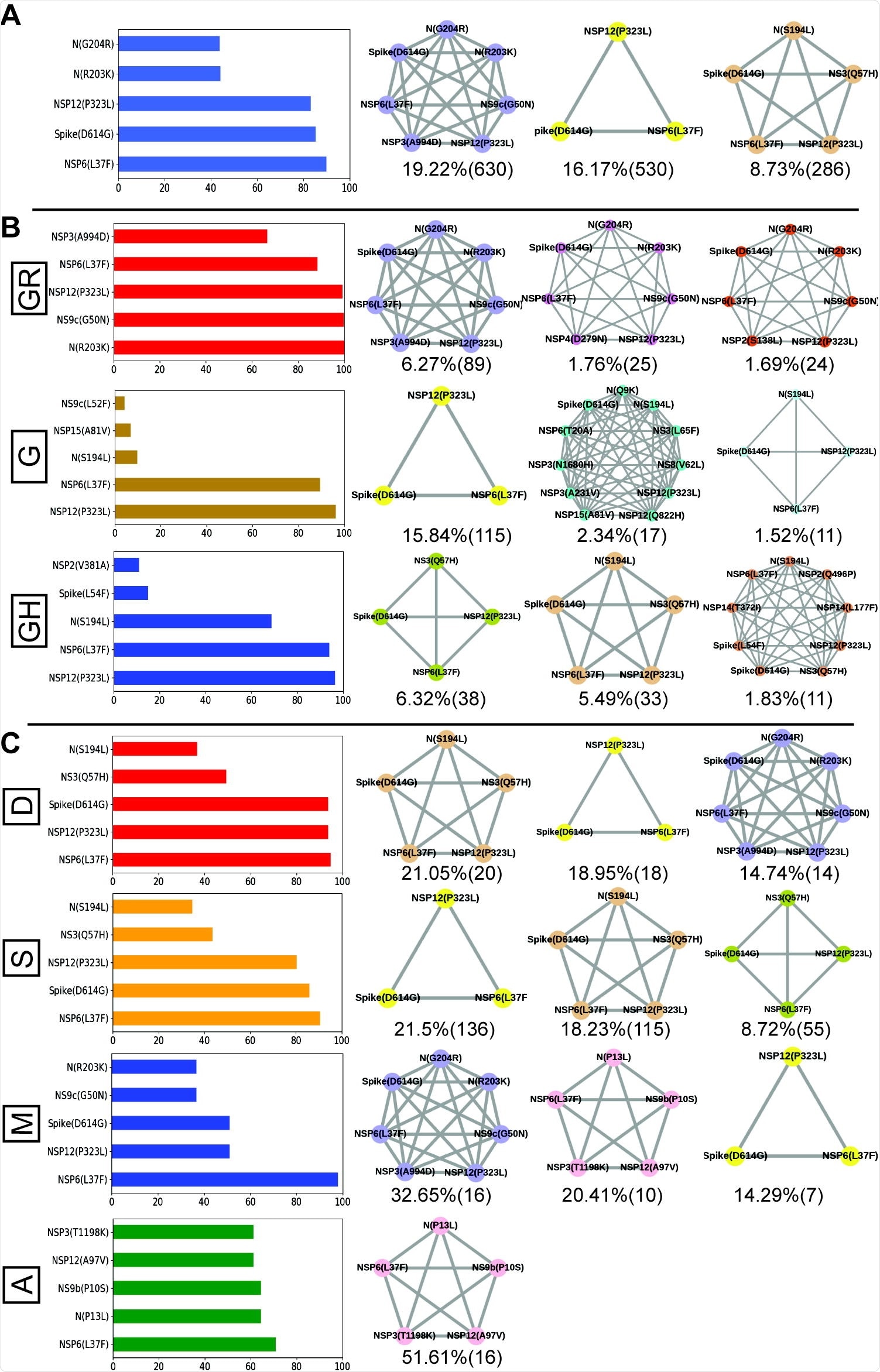Emergence of novel SARS-CoV-2 variants and co-mutations in India
A new study has uncovered genetic changes in a group of similar severe acute respiratory syndrome coronavirus 2 (SARS-CoV-2) variants in India.
The researchers write:
"We believe that our report is one of the few studies that aim to provide a comprehensive picture of the evolutionary dynamics and co-mutations patterns of the SARS-CoV-2 strains prevalent within Indian population throughout the year 2020."
The study "Genomic surveillance and phylodynamic analyses reveal the emergence of a novel mutation and co-mutation patterns within SARS-CoV2 variants prevalent in India" is available as a preprint on the bioRxiv* server, while the article undergoes peer review.
How they did it
The researchers performed genomic surveillance of 54 samples positive for SARS-CoV-2 from Kolkata — the capital of West Bengal state of India. Patients ranged from 6-88 years with an overall male to female ratio of 1.7.
The samples were collected from August 2020 to October 2020 (Term3) and comprise all SARS-CoV-2 genome sequences in West Bengal except for one.
The team notes the Term3 genetic sequences are different from India's because they show a higher amount of 'O' clade and 20A clade.
The Term3 sequences also differed from SARS-CoV-2 genetic sequences collected from April 2020 to July 2020 (Term 2). In Term2, the West Bengal region had an 82% higher amount of 'G' and 83% higher amount of 20A clade distribution than the other states of India. They indicate the viral clades in West Bengal are evolving slowly.
Using the GSAID database, they analyzed their samples to the genomic sequences in other continents. And except North America and Europe, all other continents had a prevalence of the GR clade in the middle and end of 2020. While North America did not show a GR prevalence, they showed a higher frequency of GH clade. Europe showed more increases of the GV clade of SARS-CoV-2 in Europe at the end of the year.

Emergence of mutations during the pandemic
Next, the researchers tracked the evolutionary changes of SARS-CoV-2 in other areas in India. Genomic surveillance from viral samples in Indian patients showed the GR and 20B clade were more prevalent in India.
When looking at the variation of co-mutations across Indian states and union territories, the researchers observed the emergence of non-clade defining mutations during Term2 and Term3. These results were comparable to the beginning of the pandemic (Term1). Unique combinations of these mutations were reported more frequently toward the end of 2020.
Specifically, in Term 2, India's states such as Telangana, Maharashtra, and Karnataka showed five or more co-mutations. At the same time, the West Bengal area and Gujarat had SARS-CoV-2 strains with less than five co-mutations.
By Term 3, there were more sequences of Telangana and Maharashtra with higher co-mutating residues than those of West Bengal. The rise of distinct mutations may be associated with a significant increase of coronavirus cases in Maharashtra and Karnataka compared to West Bengal and Gujarat during 'Term2' and 'Term3'.
"Hence, the higher number co-mutations in those two states could be associated with higher infectivity of the strains prevalent there."
Mutations correlated with severity of disease
The team used their genomic surveillance data to assess how mutations affected the severity of COVID-19 illness. They could use 806 of 3,277 sequences as it included a patient's COVID-19 status and if they were deceased, symptomatic, mild, and asymptomatic.
All sequences showed the D614G and NSP12 mutations. However, people who had symptomatic COVID-19 infection or who died from COVID-19 were more likely to show more NS9b(P10S), N(P13L), NSP12(A97V), and NSP3(T1198K) mutations than patients who were asymptomatic.
There was also a co-mutation triad in [NSP6(L37F)-NSP12(P323L)-Spike(D614G)] in patients who are deceased or who have mild or symptomatic COVID-19 infection.
Among 5 mutations in deceased and symptomatic patients, 3 mutations were observed in mild infection, with only the NSP6(L37F) mutation appearing in asymptomatic patients.
The co-mutation network was shown in 51% of patients with asymptomatic disease and 20.41% of mild infections. However, the co-mutation network was not seen in symptomatic cases and the deceased. New co-mutation networks were noted across time in different clades and states of India.
The researchers suggest specific mutations and unique combinations of SARS-CoV-2 mutations are correlated with disease severity based on the results.
*Important Notice
bioRxiv publishes preliminary scientific reports that are not peer-reviewed and, therefore, should not be regarded as conclusive, guide clinical practice/health-related behavior, or treated as established information.
- Biswas N, et al. "Genomic surveillance and phylodynamic analyses reveal emergence of novel mutation and co-mutation patterns within SARS-CoV2 variants prevalent in India" bioRxiv, 2021. doi: https://doi.org/10.1101/2021.03.25.436930, https://www.biorxiv.org/content/10.1101/2021.03.25.436930v1
Posted in: Medical Research News | Disease/Infection News
Tags: Coronavirus, Coronavirus Disease COVID-19, Frequency, Genetic, Genome, Genomic, Mutation, Pandemic, Respiratory, SARS, SARS-CoV-2, Severe Acute Respiratory, Severe Acute Respiratory Syndrome, Syndrome

Written by
Jocelyn Solis-Moreira
Jocelyn Solis-Moreira graduated with a Bachelor's in Integrative Neuroscience, where she then pursued graduate research looking at the long-term effects of adolescent binge drinking on the brain's neurochemistry in adulthood.
Source: Read Full Article
